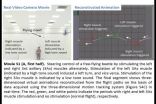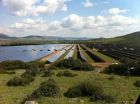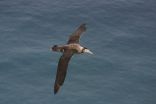Genetic discovery provides clues to how TB may evade the immune system
2015-03-16
(Press-News.org) The largest genetic study of tuberculosis (TB) susceptibility to date has led to a potentially important new insight into how the pathogen manages to evade the immune system. Published today in the journal Nature Genetics, the study advances understanding of the biological mechanisms involved in TB, which may open up new avenues to design efficient vaccines for its prevention.
TB, caused by infection with the pathogen Mycobacterium tuberculosis, is a major global public health problem. According to the World Health Organization, in 2013 nine million people fell ill with TB and 1.5 million died from the disease. Over 95% of TB deaths occur in low- and middle-income countries. About one-third of the world's population has latent TB - in other words, they carry the infection but show no symptoms; only around one in ten of infected individuals develop active TB.
Evidence suggests that an individual's DNA affects their susceptibility to TB, both in terms of becoming infected and whether the disease progresses from latent to active TB. In order to identify genes that predispose people to TB, an international team of researchers carried out a genome-wide association study (GWAS), comparing the genomes of 5,500 TB patients against those of 5,600 healthy controls. In total, the researchers analysed 7.6 million genetic variants.
The team found that variants of the gene ASAP1 on chromosome 8 affect individuals' susceptibility to TB. The gene encodes a protein carrying the same name and is highly expressed - in other words, larger amounts of the protein are found - in a particular type of immune cells known as dendritic cells that play a key role in kick-starting the body's immune response to incoming pathogens.
The researchers showed that infection with M. tuberculosis leads to the reduction of ASAP1 expression in dendritic cells - but people who have a particular genetic variant in the ASAP1 gene associated with greater susceptibility to TB show stronger reduction of ASAP1 expression after infection than people who have a protective variant of this gene.
The researchers found that reducing levels of the ASAP1 protein affects the ability of dendritic cells to move, which explains the mechanism of the previously-known slow migration of dendritic cells infected with M. tuberculosis and may help the pathogen to evade the immune system, leading to TB.
"Our study provides a new insight into biological mechanisms of TB," says Dr Sergey Nejentsev, Wellcome Trust Senior Research Fellow from the Department of Medicine at the University of Cambridge, who led the research. "TB is a major global health problem and the threat of drug-resistance means that we urgently need to develop new ways of fighting back. In future, it may be possible to target immune pathways that involve ASAP1 to design efficient vaccines for TB prevention."
INFORMATION:
The study was supported by the Wellcome Trust, EU Framework Programme 7, European Research Council, the Royal Society and the NIHR Cambridge Biomedical Research Centre.
ELSE PRESS RELEASES FROM THIS DATE:
2015-03-16
A Venezuelan evolutionary biologist and a US zoologist state that they have refuted, through mitochondrial DNA sequencing, a recent claim, also based on such sequencing, that unknown type of bear must exist. in the Himalayas and that it may be, at least in part, the source of yeti legends. Their study was published in the open access journal ZooKeys.
Last year, B. Sykes and co-authors, in the course of mitochondrial DNA sequencing identification of hair samples that had been attributed to "anomalous primates" (yetis, bigfoots, and others), claimed to have found that ...
2015-03-16
Berkeley -- Hard-wiring beetles for radio-controlled flight turns out to be a fitting way to learn more about their biology. Cyborg insect research led by engineers at the University of California, Berkeley, and Singapore's Nanyang Technological University (NTU) is enabling new revelations about a muscle used by beetles for finely graded turns.
By strapping tiny computers and wireless radios onto the backs of giant flower beetles and recording neuromuscular data as the bugs flew untethered, scientists determined that a muscle known for controlling the folding of wings ...
2015-03-16
In the face of global climate change, increasing the use of renewable energy resources is one of the most urgent challenges facing the world. Further development of one resource, solar energy, is complicated by the need to find space for solar power-generating equipment without significantly altering the surrounding environment.
New work from Carnegie's Rebecca R. Hernandez (now at University of California Berkley), Madison K. Hoffacker, and Chris Field found that the amount of energy that could be generated from solar equipment constructed on and around existing infrastructure ...
2015-03-16
Northwestern University scientists have developed a robust new material, inspired by biological catalysts, that is extraordinarily effective at destroying toxic nerve agents that are a threat around the globe. First used 100 years ago during World War I, deadly chemical weapons continue to be a challenge to combat.
The material, a zirconium-based metal-organic framework (MOF), degrades in minutes one of the most toxic chemical agents known to mankind: Soman (GD), a more toxic relative of sarin. Computer simulations show the MOF should be effective against other easy-to-make ...
2015-03-16
"Warmer air transports more moisture and hence produces more precipitation - in cold Antarctica this takes the form of snowfall," lead author Katja Frieler from the Potsdam Institute for Climate Impact Research (PIK) explains. "We have now pulled a number of various lines of evidence together and find a very consistent result: Temperature increase means more snowfall on Antarctica," says Frieler. "For every degree of regional warming, snowfall increases by about 5 percent." Published in the journal Nature Climate Change, the scientists' work builds on high-quality ice-core ...
2015-03-16
Researchers have discovered a valley underneath East Antarctica's most rapidly-changing glacier that delivers warm water to the base of the ice, causing significant melting.
The intrusion of warm ocean water is accelerating melting and thinning of Totten Glacier, which at 65 kilometres long and 30 kilometres wide contains enough ice to raise global sea levels by 3.5 metres. The glacier is one of the major outlets for the East Antarctic Ice Sheet, which is the largest mass of ice on Earth and covers 98 percent of the continent.
Climate change is raising the temperature ...
2015-03-16
CORVALLIS, Ore. - A new study confirms that snowfall in Antarctica will increase significantly as the planet warms, offsetting future sea level rise from other sources - but the effect will not be nearly as strong as many scientists previously anticipated because of other, physical processes.
That means that many computer models may be underestimating the amount and rate of sea level rise if they had projected more significant impact from Antarctic snow.
Results of the study, which was funded by the National Science Foundation, were reported this week in the journal ...
2015-03-16
About one quarter of the global seafloor is extremely nutrient poor. Contrary to previous assumptions, it contains oxygen not just in the thin surface layer, but also throughout its entire thickness. The underlying basement rocks contain oxygen as well. An international research team made these new discoveries through analysis of drill cores from the South Pacific Gyre.
In the latest issue of Nature Geoscience the scientists also point out the potential effects on the composition of Earth's interior because oxygen-containing deep-sea sediment has a different mineral composition ...
2015-03-16
The underlying mechanism behind an enigmatic process called "singlet exciton fission", which could enable the development of significantly more powerful solar cells, has been identified by scientists in a new study.
The process is only known to happen in certain materials, and occurs when they absorb light. As the light particles come into contact with electrons within the material, the electrons are excited by the light, and the resulting "excited state" splits into two.
If singlet exciton fission can be controlled and incorporated into solar cells, it has the potential ...
2015-03-16
Climbing rats, seabirds and tropical gophers are among the 15 animal species that are at the absolute greatest risk of becoming extinct very soon. Expertise and money is needed to save them and other highly threatened species.
A new study shows that a subset of highly threatened species - in this case 841 - can be saved from extinction for about $1.3 billion a year. However, for 15 of them the chances of conservation success are really low.
The study published in Current Biology concludes that a subset of 841 endangered animal species can be saved, but only if conservation ...
LAST 30 PRESS RELEASES:
[Press-News.org] Genetic discovery provides clues to how TB may evade the immune system


